In today’s fast-paced world, finding tranquility and simplicity at home has become a priority for many. The minimalist zen house design trend embodies this desire, offering a blend of clean lines, natural elements, and a serene aesthetic. This design philosophy not only creates spaces that are visually calming but also promotes a lifestyle of simplicity and mindfulness.
The concept of minimalist zen house design has increasingly become a beacon for those seeking refuge from the clutter and noise of modern living. This design philosophy, rooted in the principles of Zen Buddhism, emphasizes simplicity, natural beauty, and a sense of tranquility. By prioritizing space, light, and form, minimalist zen interiors offer a serene and uncluttered environment that promotes peace and mindfulness.
The Harmony with Nature: Bringing the Outdoors Inside
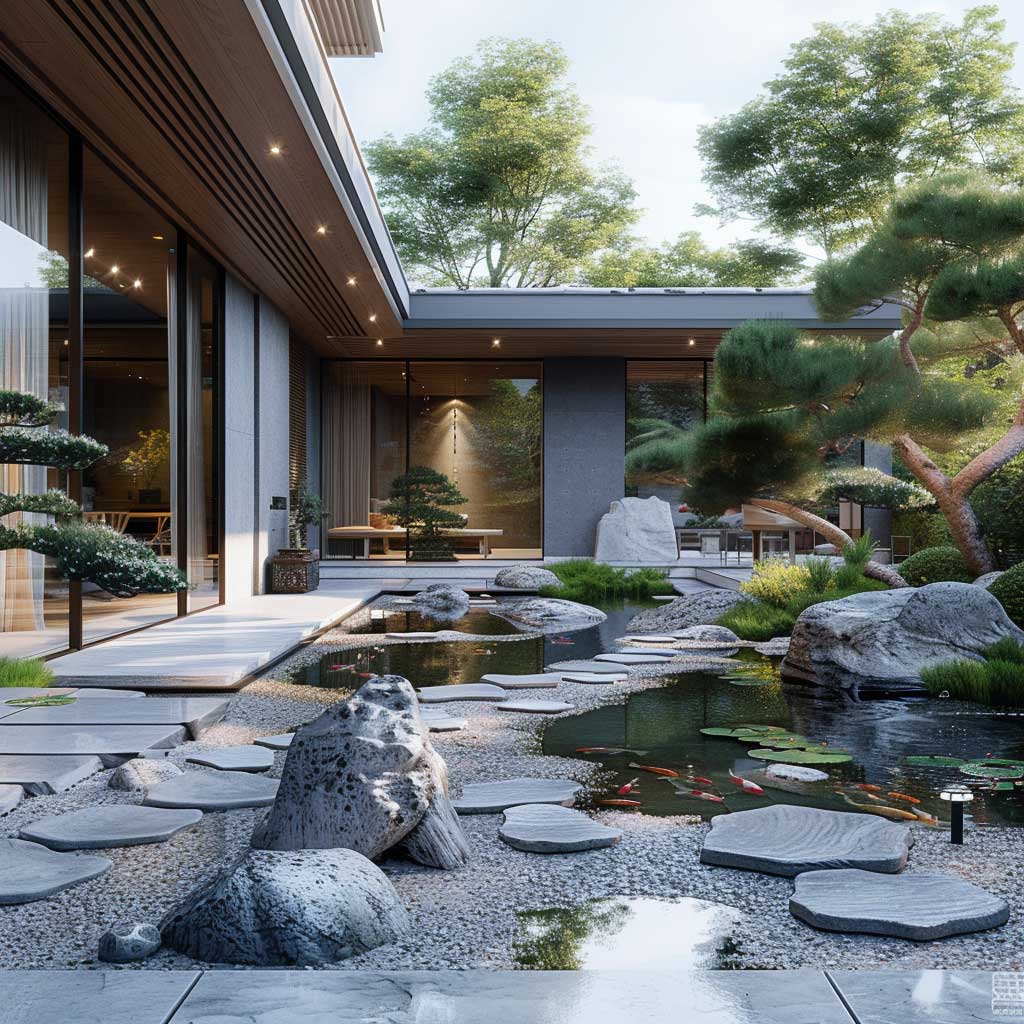
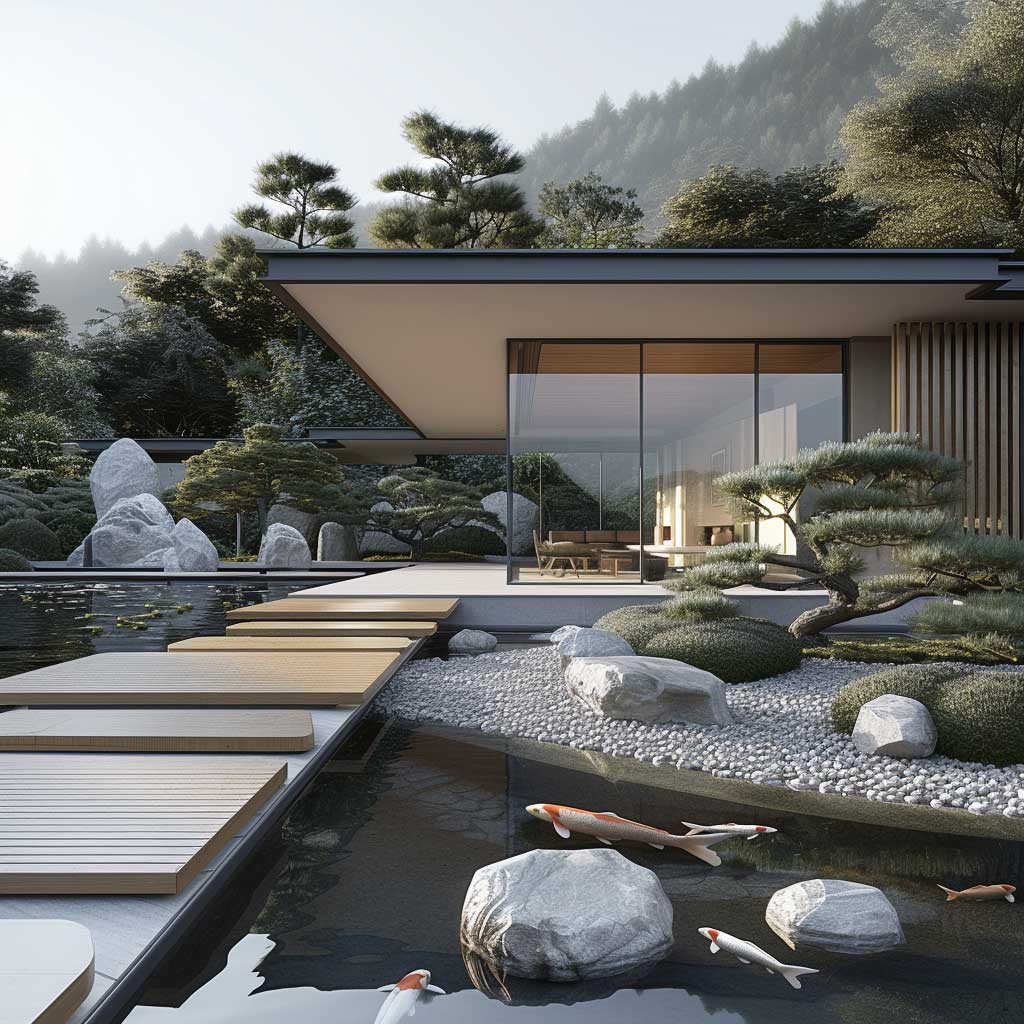
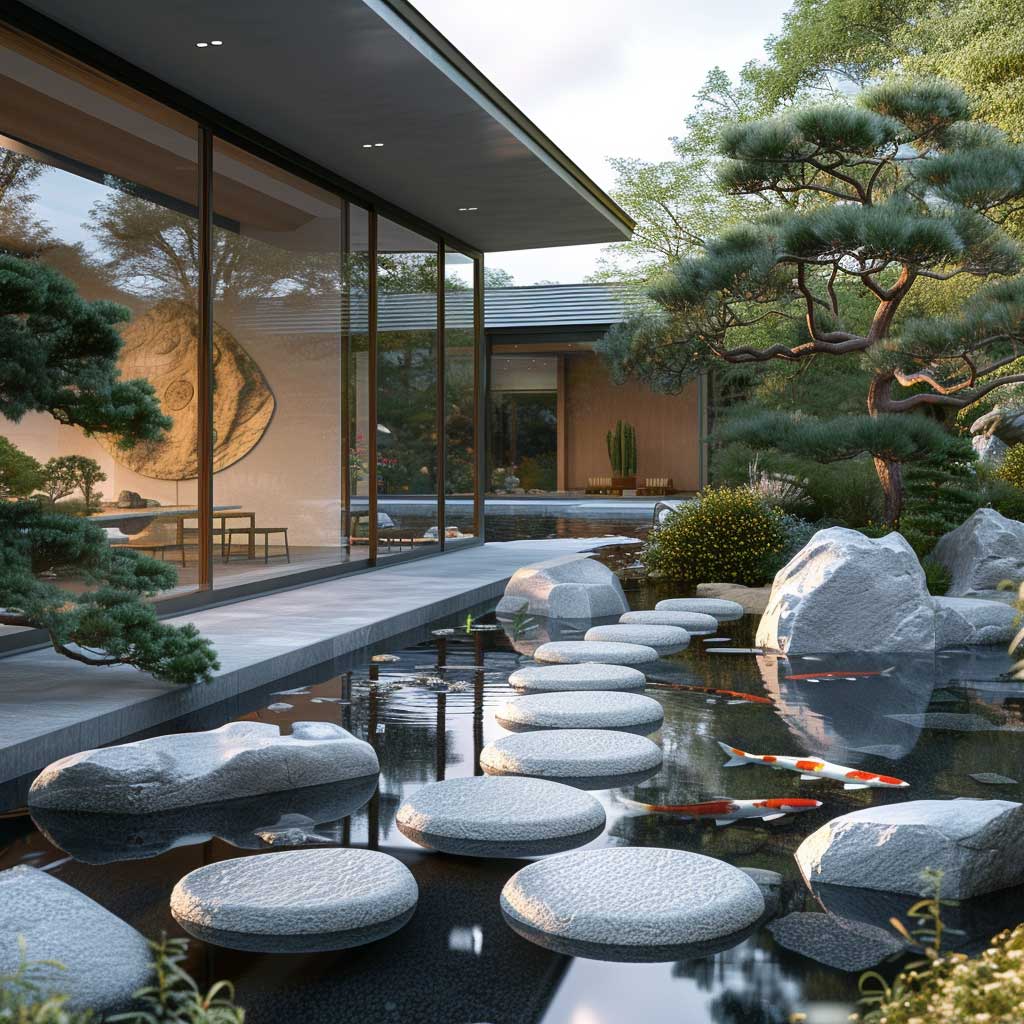

One of the core aspects of minimalist zen design is its focus on harmonizing indoor and outdoor spaces. This seamless blend encourages a life that is in closer contact with nature, inviting calmness and a sense of wellbeing. Natural light, organic materials, and greenery are not just design elements but integral components that bridge the gap between the built environment and the natural world.
In a minimalist zen home, every aspect of the design serves a purpose, including the outdoor spaces. Gardens, patios, and even balconies are thoughtfully curated to extend the living space beyond the interior confines. Smooth pebbles, tranquil water features, and meticulously pruned plants are often used to create a contemplative outdoor retreat. This connection with nature not only enhances the aesthetic appeal of the home but also contributes to the physical and mental wellbeing of its inhabitants.
The use of natural materials like wood, stone, and bamboo reinforces this connection, bringing textures and colors that echo the outside world. Large windows and glass doors offer unobstructed views of the outdoors, while also maximizing natural light, which is essential for creating a bright and airy atmosphere. The strategic placement of these elements ensures that the transition between indoor and outdoor spaces is fluid and natural.




Furniture and decor in a minimalist zen outdoor space are carefully chosen to maintain the clean lines and simplicity of the design. Rather than overwhelming the area with excessive furnishings, the focus is on quality and functionality, with each piece selected to enhance the overall sense of harmony and balance.
The integration of outdoor spaces in minimalist zen house design goes beyond aesthetics; it is a reflection of a lifestyle that values simplicity, mindfulness, and a deep connection with the natural world. By blurring the boundaries between inside and outside, these homes offer a sanctuary that is both rejuvenating and inspiring, encouraging a slower pace of life that is in tune with nature.
Zen Bedrooms: A Sanctuary for Rest and Reflection
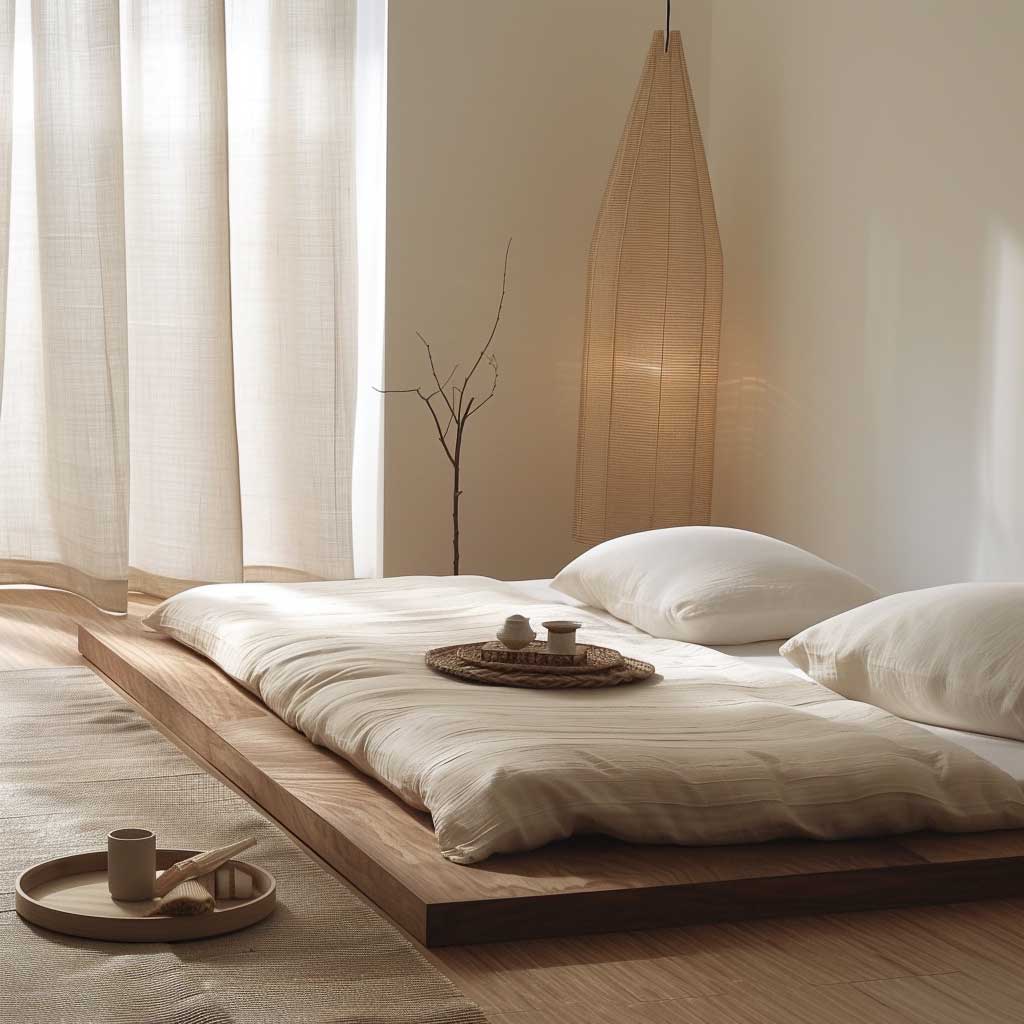
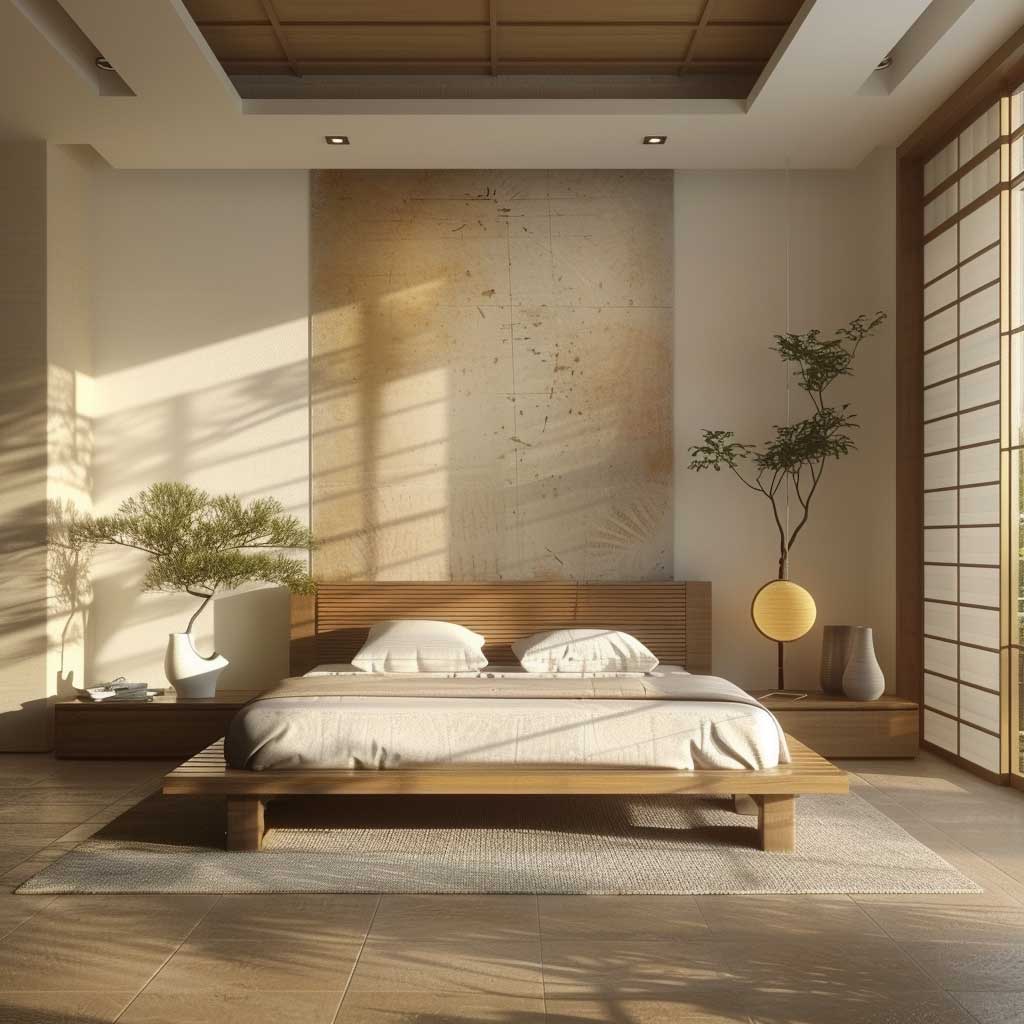
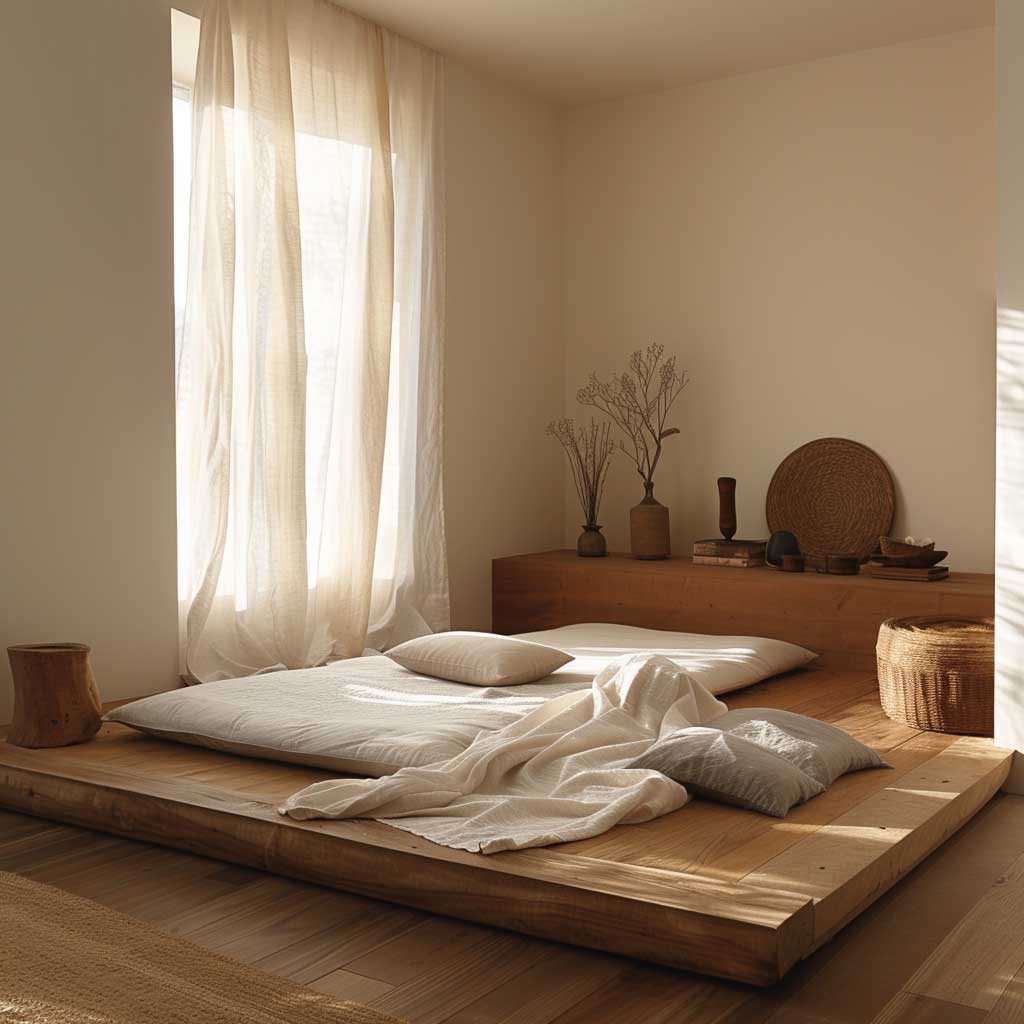

The bedroom, in the context of minimalist zen house design, is more than just a place to sleep. It is a sanctuary for rest, reflection, and rejuvenation. The design of these spaces follows the same principles of simplicity, natural elements, and tranquility that define the overall aesthetic of the home. In a zen bedroom, every detail is considered to create an environment that promotes relaxation and peace.
Minimalist zen bedrooms are characterized by their clean lines, subdued colors, and absence of clutter. The color palette often includes soft neutrals and earth tones, which have a calming effect on the mind and body. These colors reflect the natural world and contribute to the serene atmosphere of the room.
Furniture is kept to a minimum, with each piece chosen for its functionality and simplicity. A low bed frame, often made of natural wood, is a staple of zen bedrooms, symbolizing stability and groundedness. Bedding is typically made of natural fabrics like cotton or linen, in colors that complement the room’s calm aesthetic.
Lighting plays a crucial role in creating the right ambiance in a zen bedroom. Soft, diffused light sources are preferred over harsh, direct lighting, to mimic the gentle illumination of nature. The use of candles or dimmable lamps can add to the sense of tranquility and make the space more inviting.


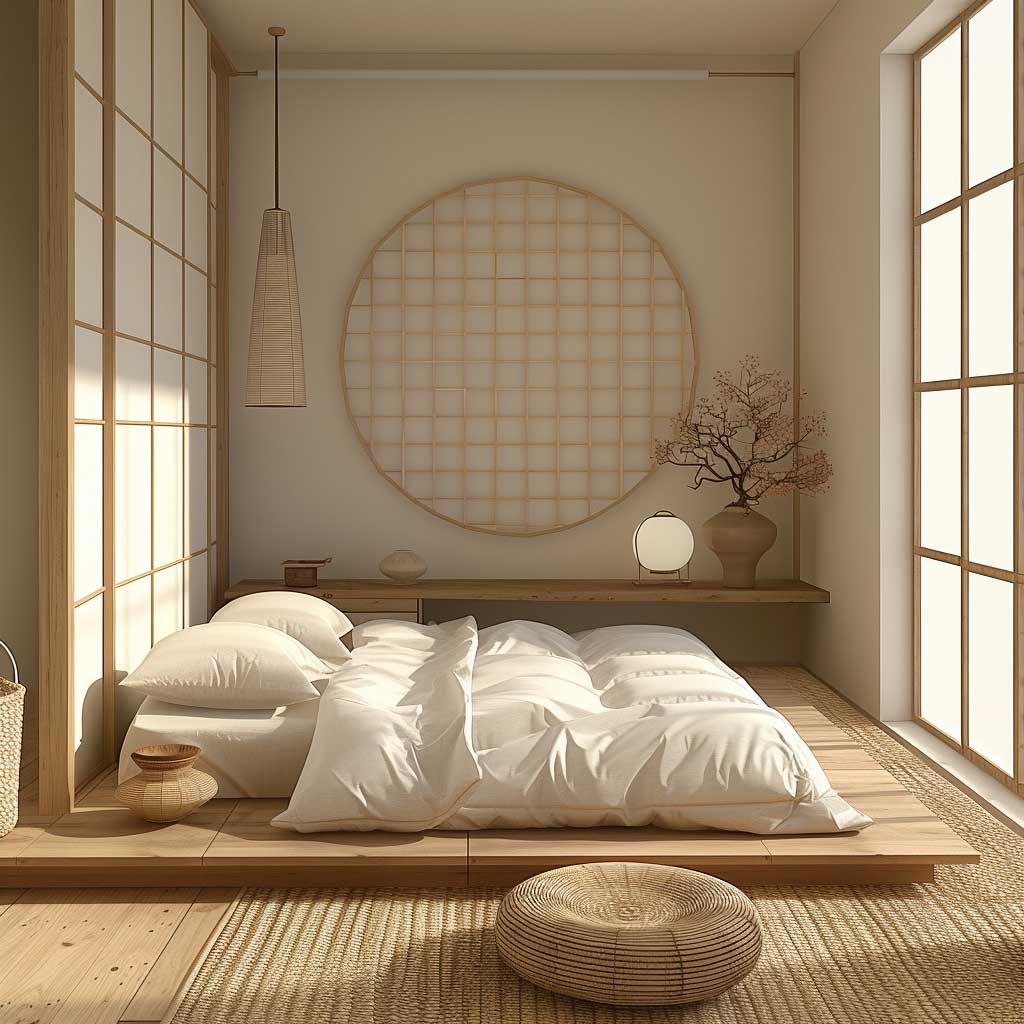

Decor in a minimalist zen bedroom is thoughtful and intentional, with each item selected to enhance the room’s peaceful vibe. This might include a simple piece of artwork, a few carefully chosen books, or a small indoor plant. These elements add personality and warmth to the space without causing distraction or clutter.
Creating a minimalist zen bedroom is about more than just aesthetics; it’s about crafting a space that supports restful sleep and peaceful waking hours. By incorporating principles of simplicity, natural beauty, and mindfulness, these bedrooms offer a retreat from the stresses of everyday life, promoting a sense of well-being and contentment.
In embracing minimalist zen house design, homeowners are choosing a lifestyle that values simplicity, balance, and a deep connection with the natural world. Through thoughtful design and intentional living, these spaces offer a sanctuary from the chaos of modern life, inviting tranquility, mindfulness, and a sense of harmony into everyday existence.
Serenity in Simplicity: Embracing Minimalist Zen House Design

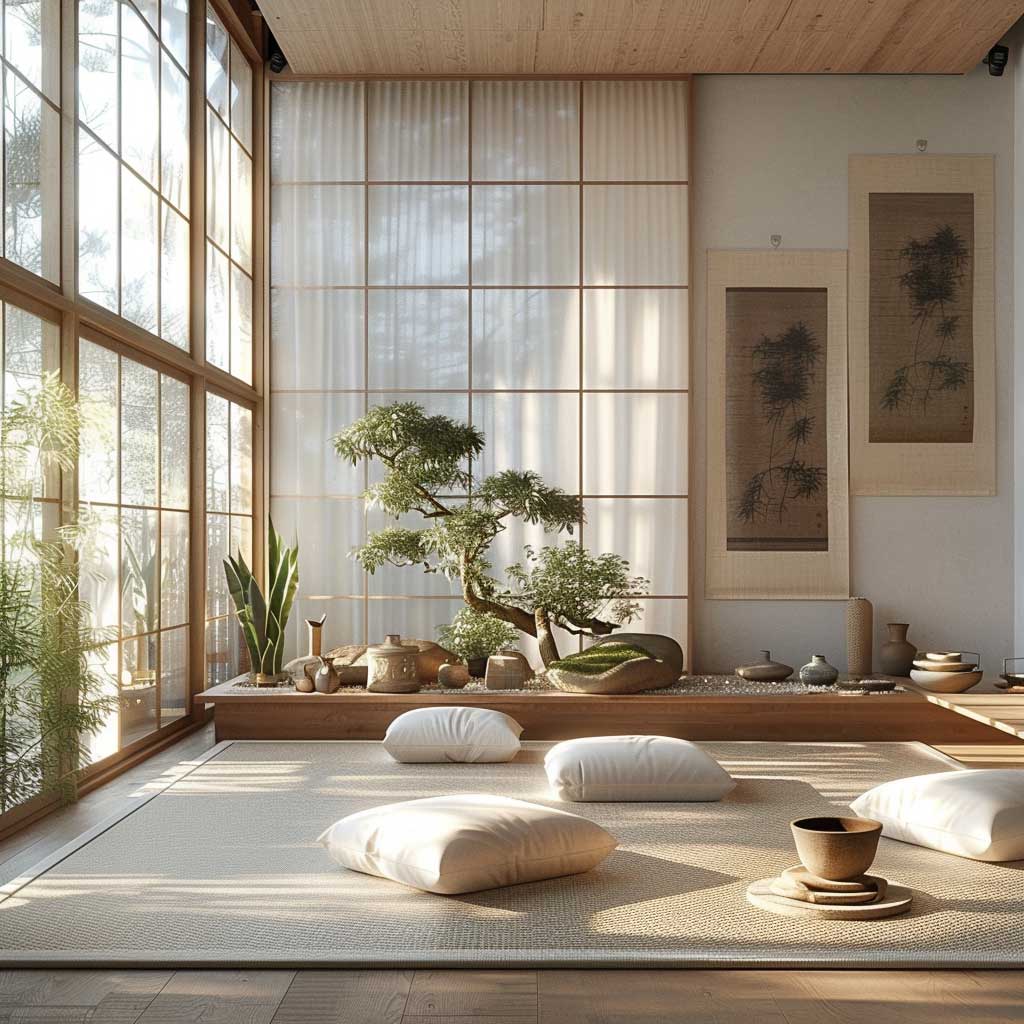


The living room serves as the heart of the home, a central space where families come together to relax, entertain, and enjoy each other’s company. In the realm of minimalist zen house design, the living room transforms into a haven of serenity and simplicity, embodying the principles of Zen philosophy that advocate for harmony, balance, and the beauty of less. This approach to design not only enhances the aesthetic appeal of the space but also fosters an environment conducive to relaxation and mindful living.
In crafting a minimalist zen living room, the emphasis is placed on open, uncluttered spaces that breathe tranquility and calm. The design is characterized by clean lines, a neutral color palette, and the use of natural materials, which together create a sense of spaciousness and light. Furniture is chosen for its simplicity and functionality, with pieces that offer comfort without dominating the space. Low-profile sofas, sleek coffee tables, and minimalist shelving units are common choices, each contributing to the overall sense of peace and order.
Natural light is another pivotal element in minimalist zen design. Large windows, possibly adorned with simple, light-filtering curtains or blinds, invite sunlight to flood the room, enhancing the sense of openness and connection with the outdoors. The interplay of light and shadow throughout the day adds a dynamic yet soothing quality to the space, constantly reminding of the natural world’s cycles and rhythms.
The incorporation of natural elements is a hallmark of minimalist zen living rooms. Indoor plants, whether a single statement piece or a collection of smaller greenery, bring life and color to the space. The presence of plants not only purifies the air but also adds a subtle touch of vibrancy and energy. Other natural elements, such as stone, wood, or water features, can be integrated to enhance the room’s connection to nature. A small indoor fountain, for example, can add a calming sound of flowing water, further enhancing the tranquil atmosphere.




Decor in a minimalist zen living room is intentionally sparse, with each item chosen for its aesthetic value or personal significance. Instead of overwhelming the space with decorative objects, the focus is on quality over quantity. A single piece of artwork that speaks to the inhabitants, a carefully selected vase, or a handcrafted textile can add a touch of elegance and personality without cluttering the space.
The minimalist zen approach to living room design is not just about creating a beautiful space; it’s about fostering an environment that supports well-being and mindfulness. By reducing clutter and distractions, the living room becomes a place where one can fully relax and be present, whether alone or with loved ones. This design philosophy encourages a slower pace of life, inviting inhabitants to savor the simple joys of living in a space that reflects the principles of serenity, simplicity, and harmony.
Adopting minimalist zen house design in the living room is a powerful statement of intent. It signifies a choice to prioritize peace, clarity, and the beauty of simplicity in daily life. As we navigate the complexities of the modern world, creating a serene and simple space at home becomes an essential refuge, a sanctuary where we can recharge, reflect, and reconnect with ourselves and those we love. Through thoughtful design and intentional living, the minimalist zen living room becomes not just a physical space, but a manifestation of a mindful and harmonious way of living.
Embracing minimalist zen house design is not just about adopting a certain style; it’s about cultivating an atmosphere of peace and simplicity in our living spaces. Through careful selection of elements and a focus on natural beauty and tranquility, one can create a home that is not only aesthetically pleasing but also a refuge from the chaos of the outside world. This approach to home design invites us to slow down, reflect, and find joy in the simplicity of our surroundings.












